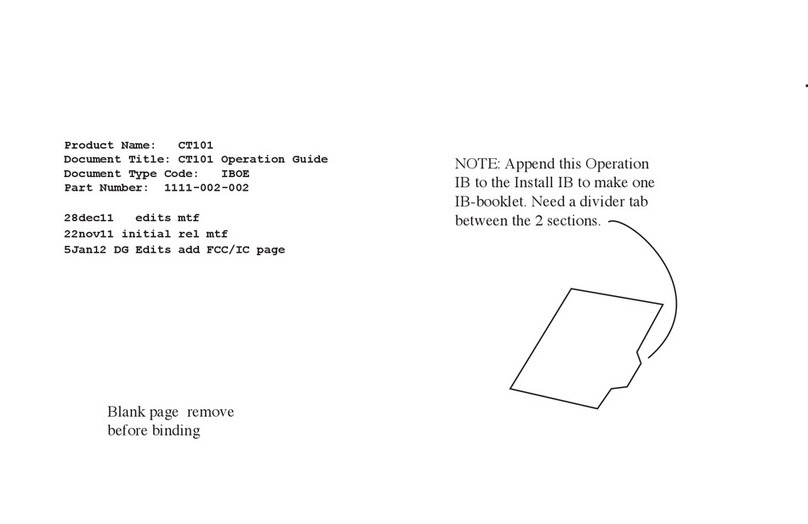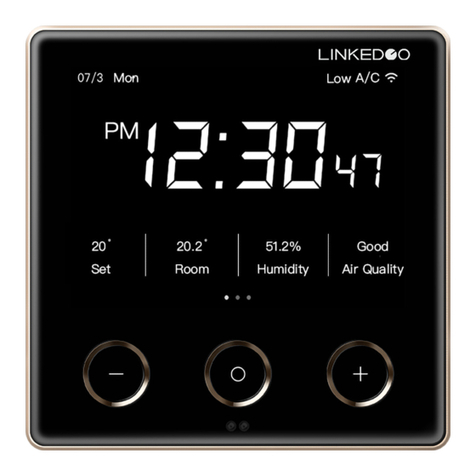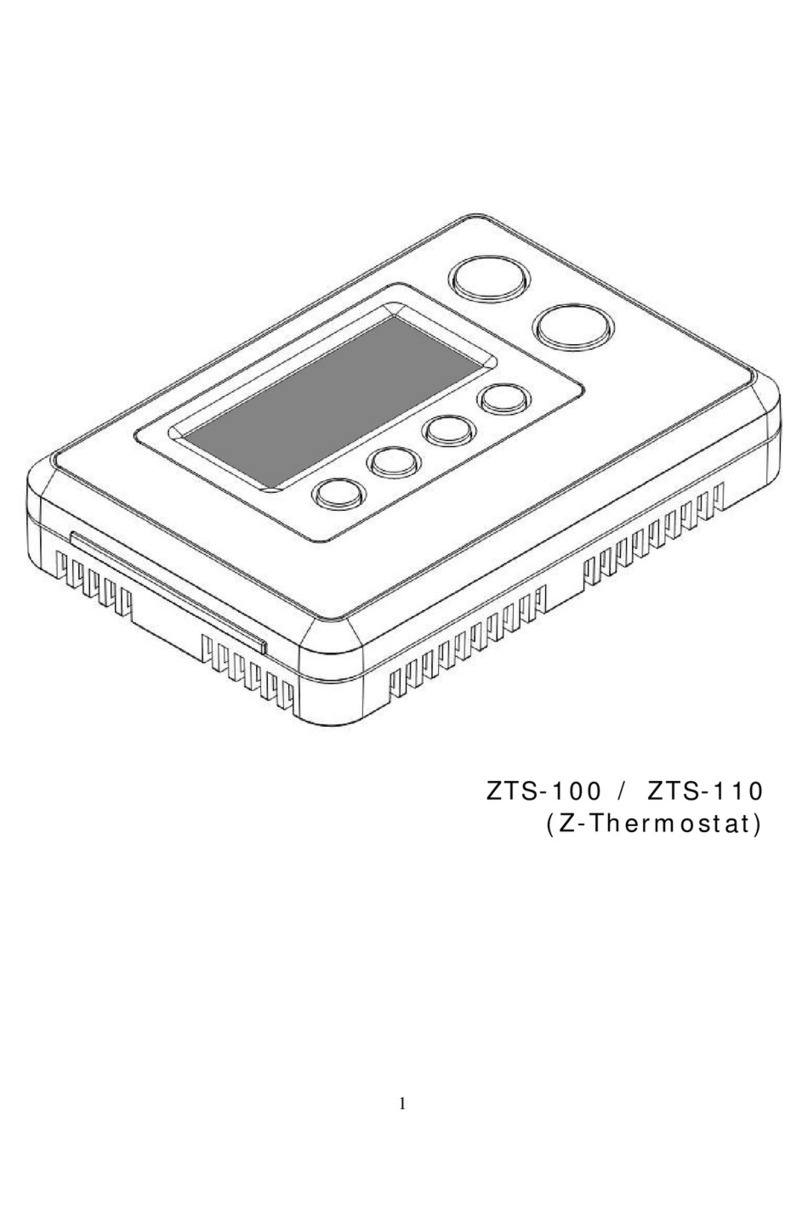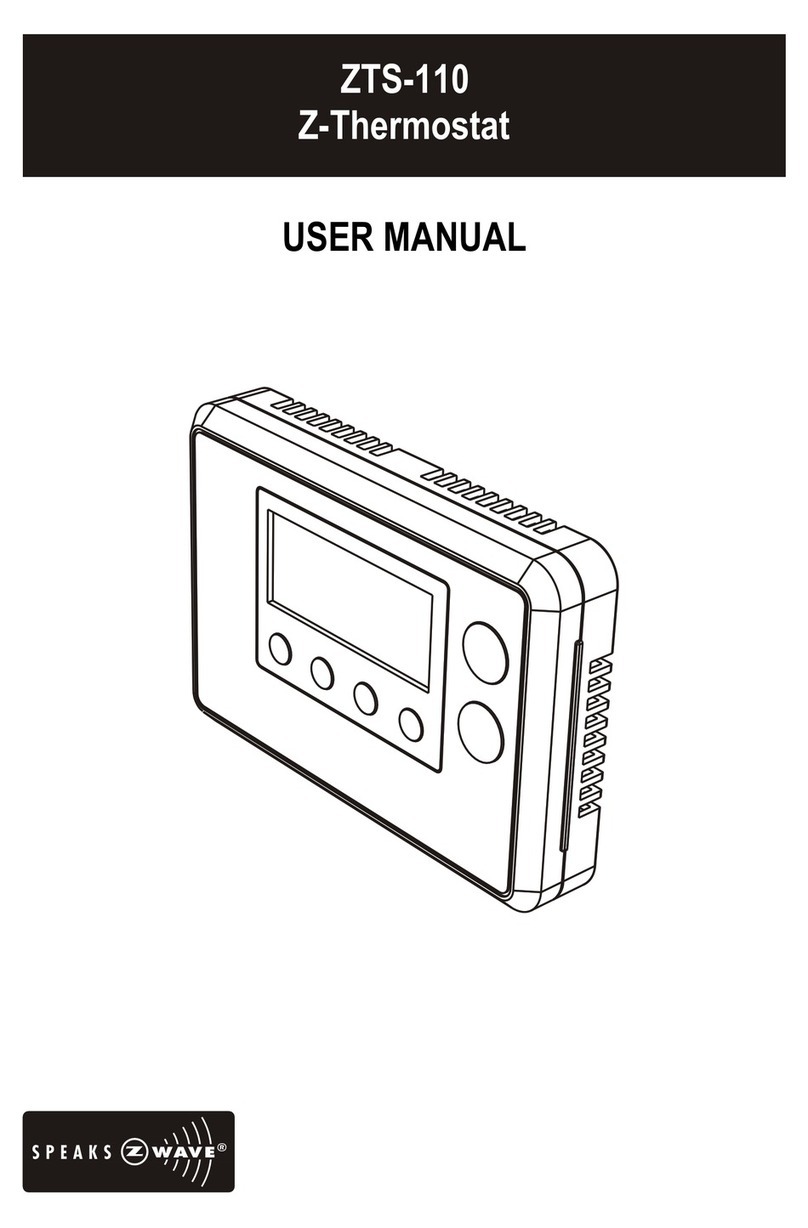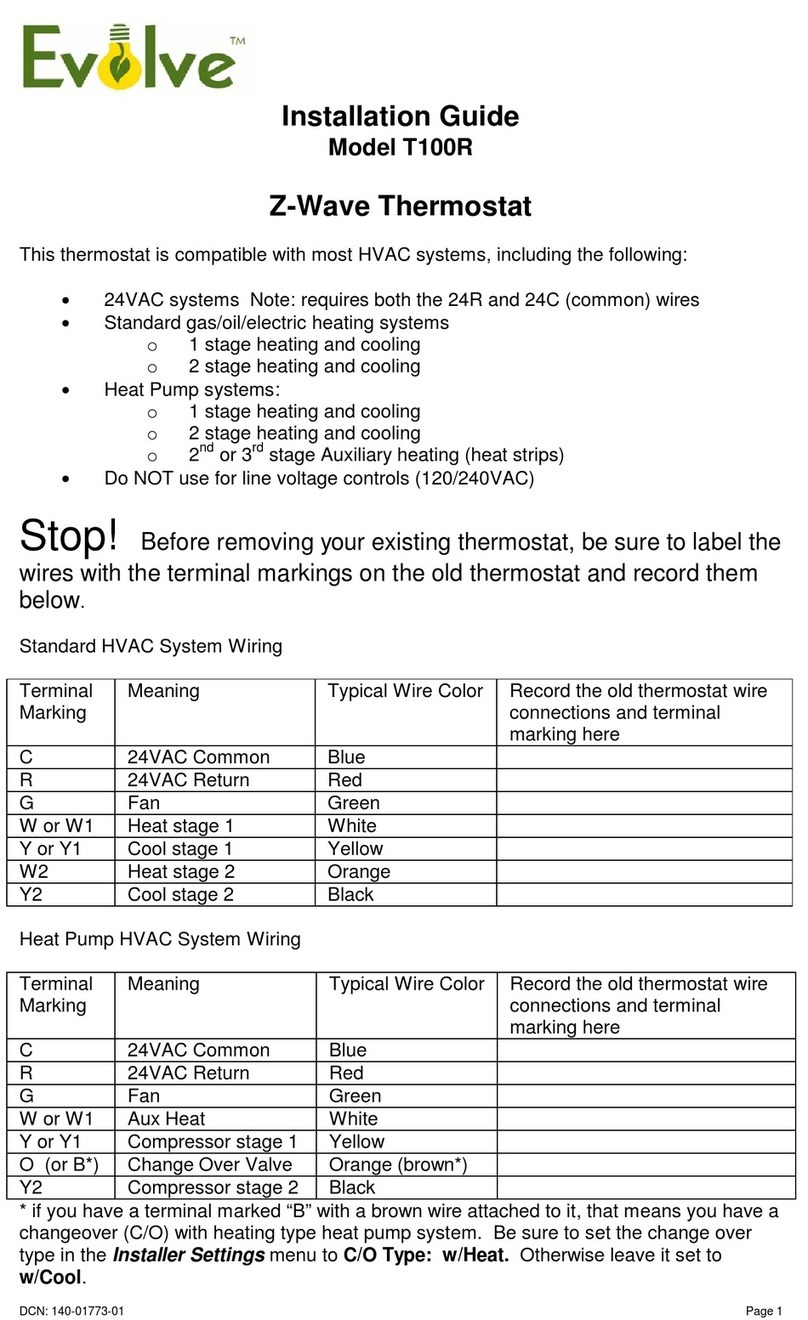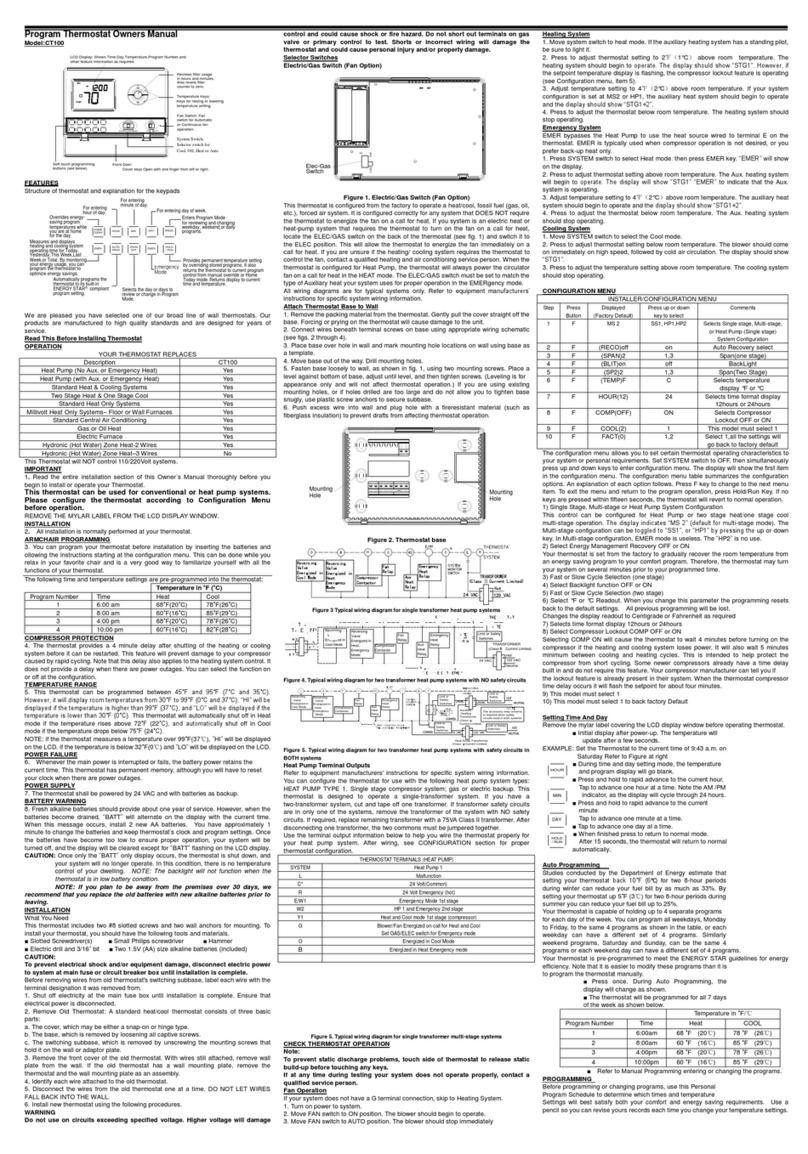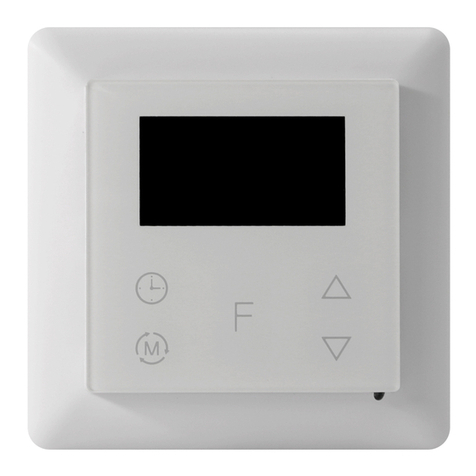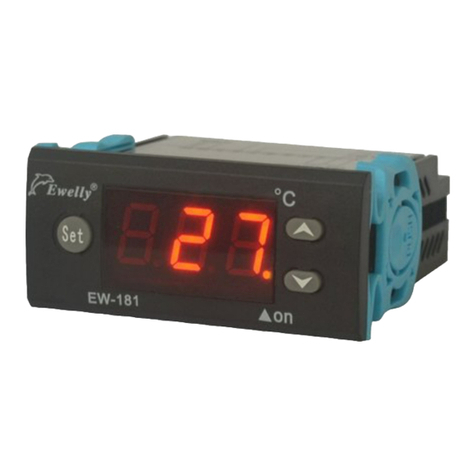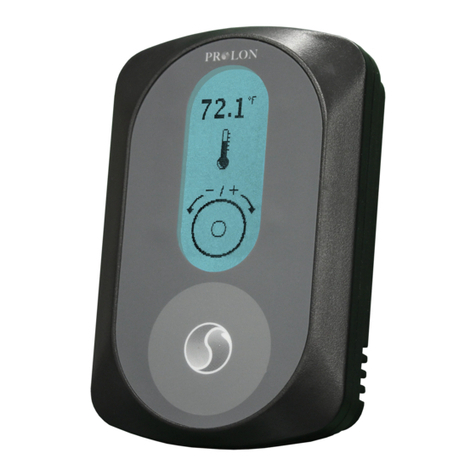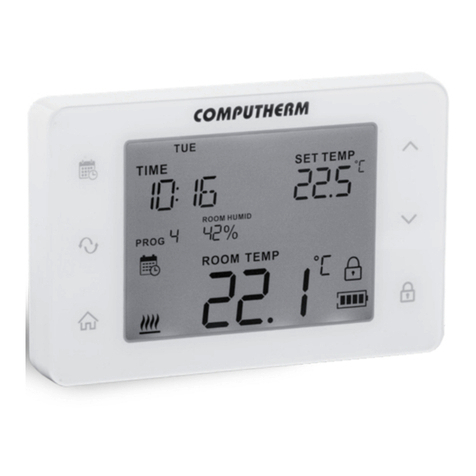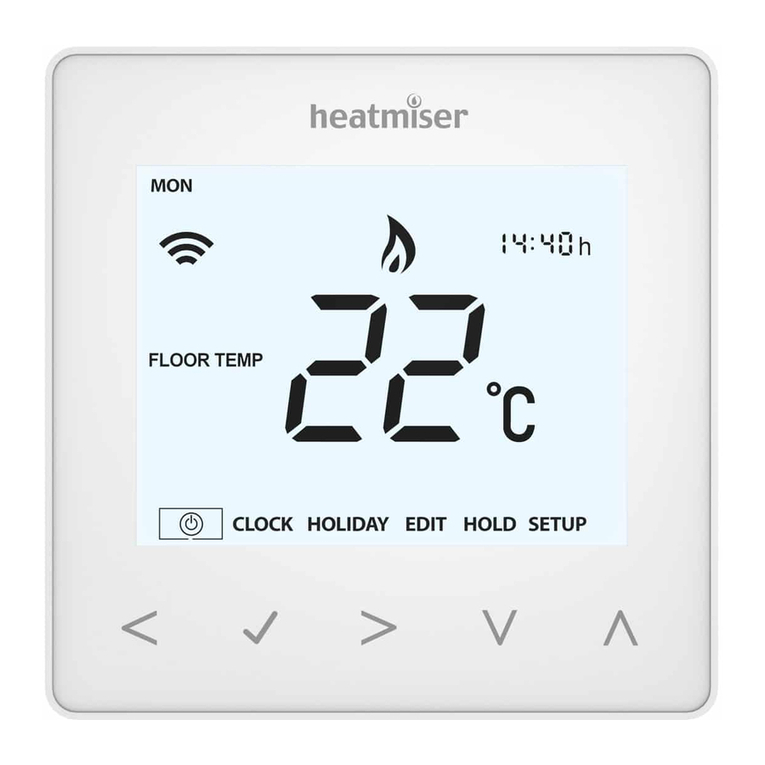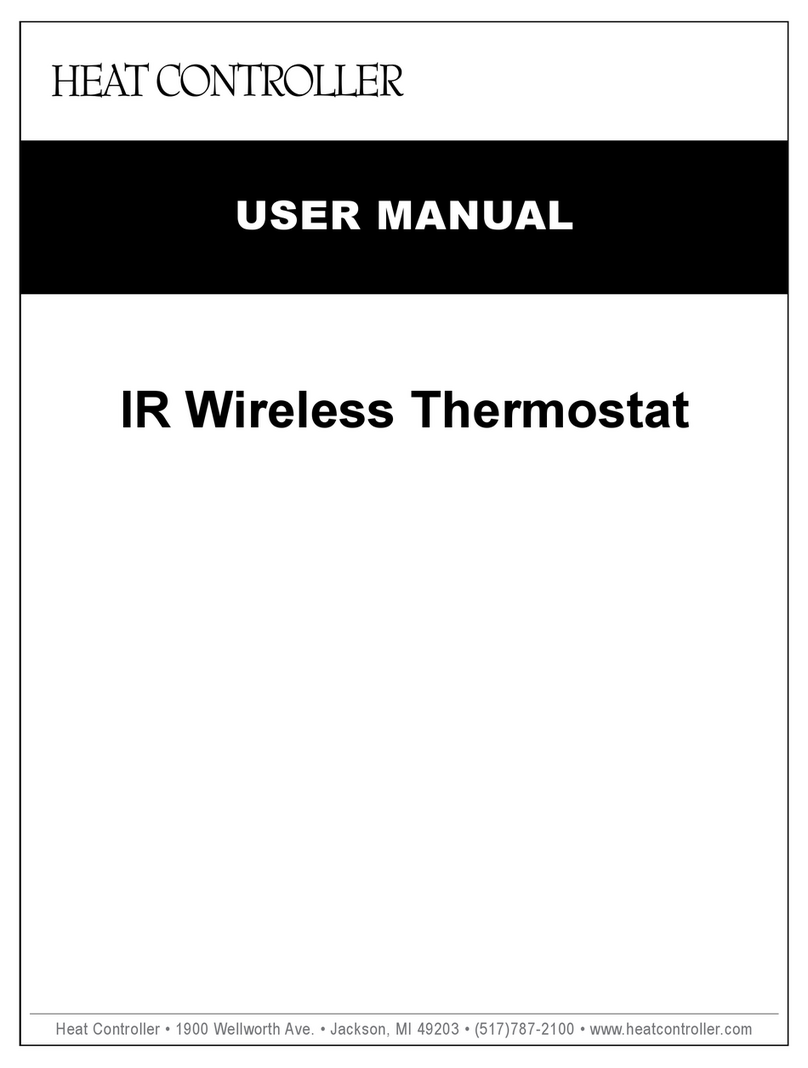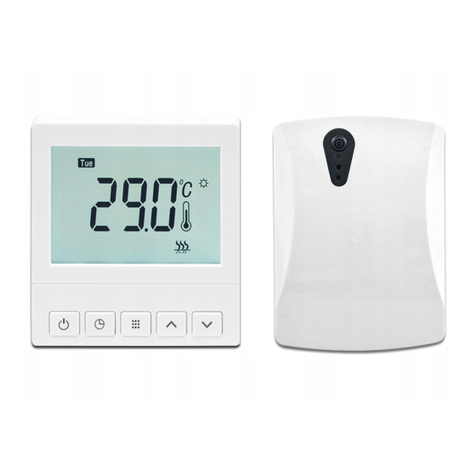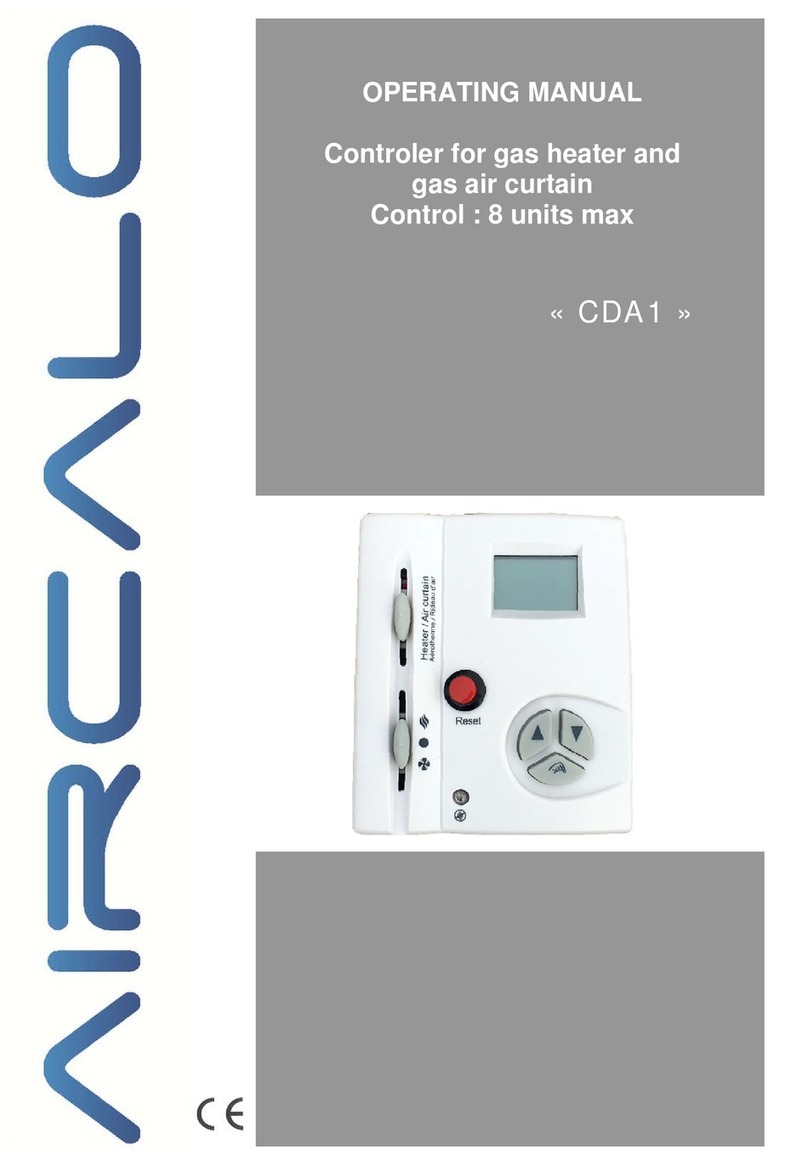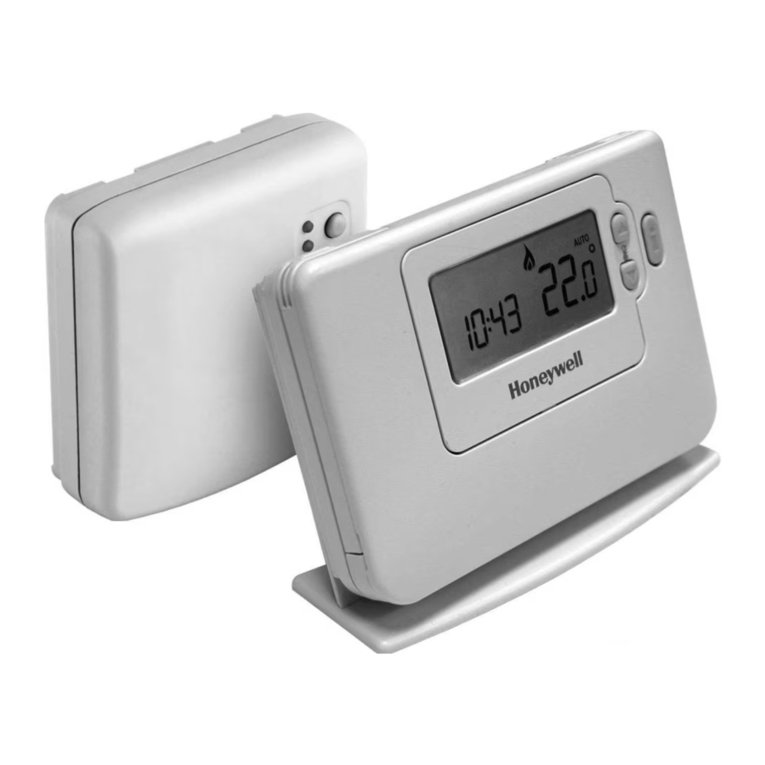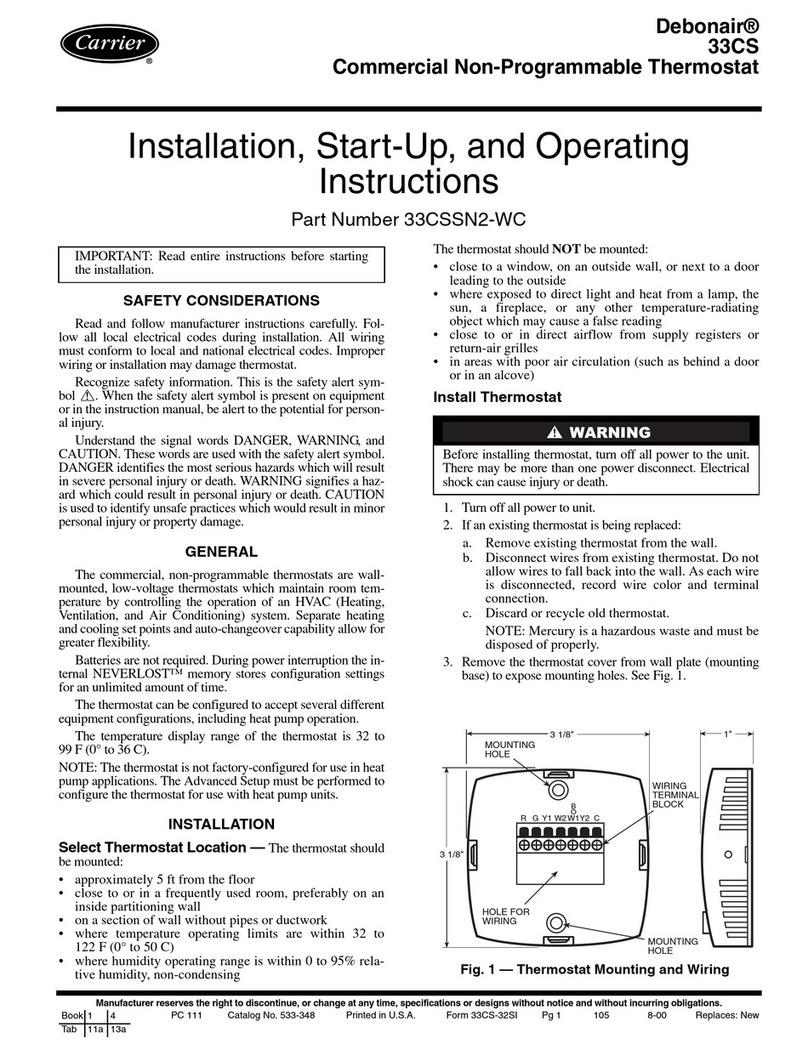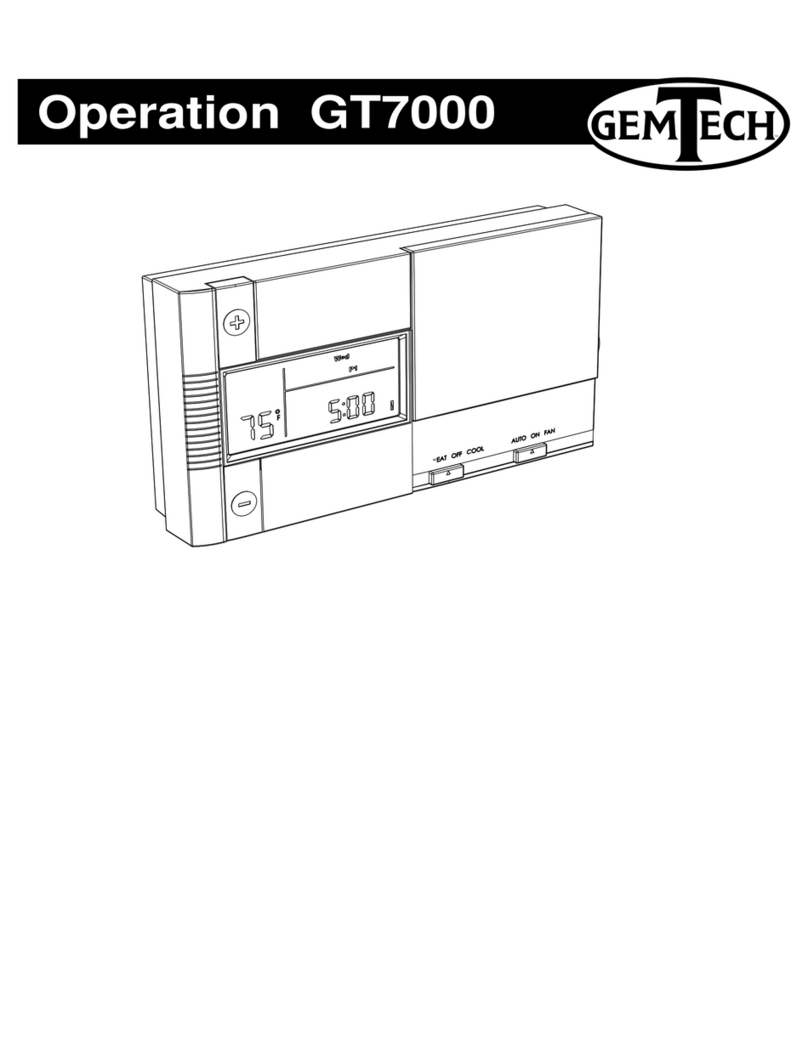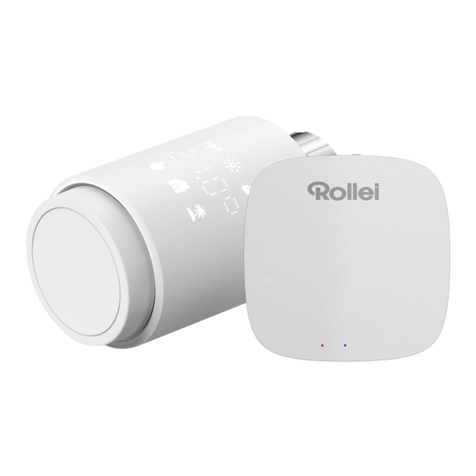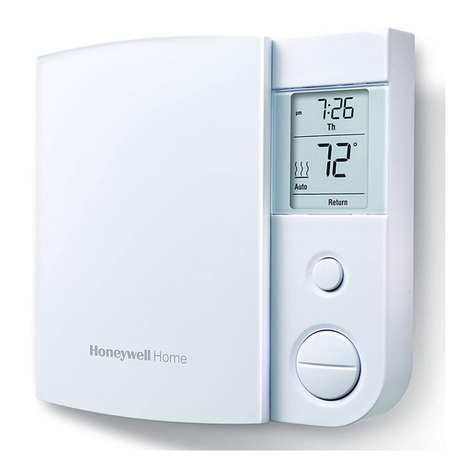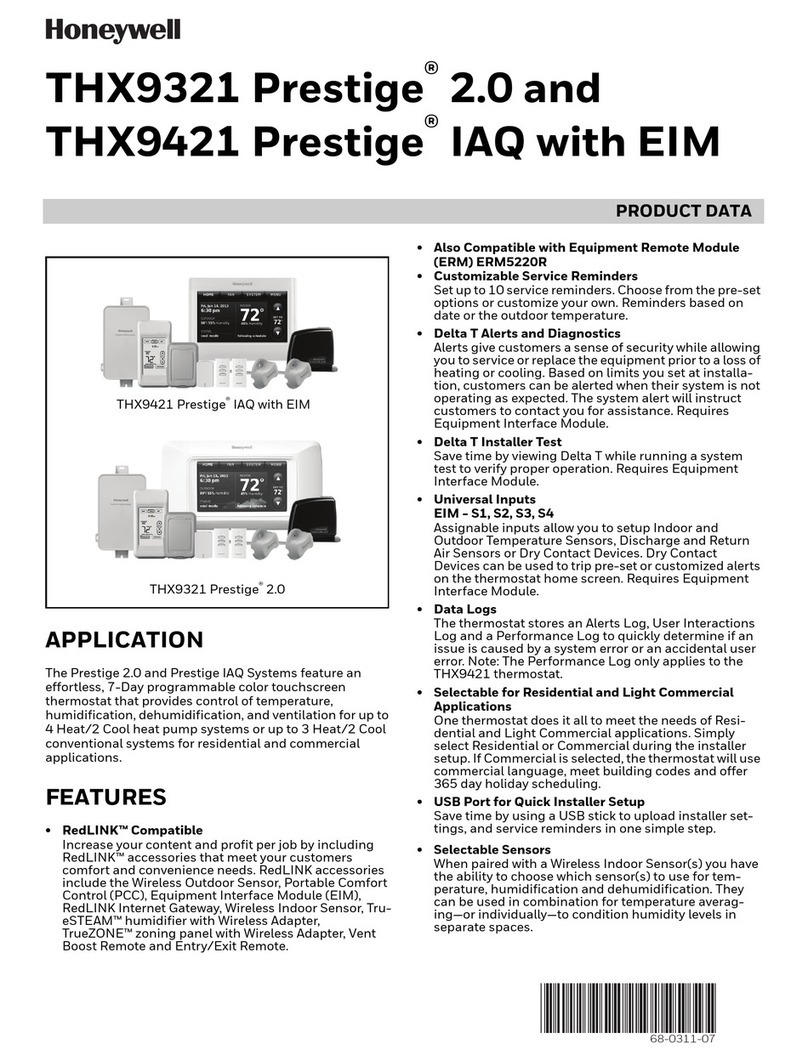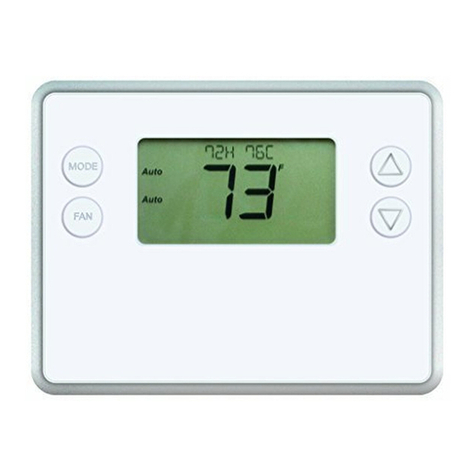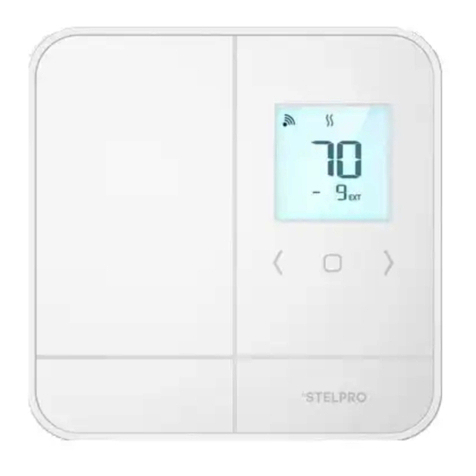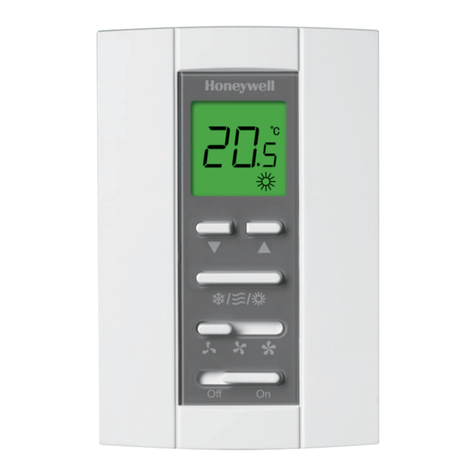3
Features List
HVAC System Compatible:
Standard (Gas/Electric) or Heat Pump HVAC systems
Multi-stage System Compatible:
Standard HVAC Systems: 2 stages heating, 2 stages cooling, 2 stages fan
Heat Pump Systems: 2 stages heating, 2 stages cooling, 2 stages fan
Heat Pump change over valve:
Selectable change over with heat or cool (B or O output)
Fan system:
Selectable for gas or electric heat systems
Temperature Display, Indication and Control:
Temperature unit in °F or °C
Temperature Measurable Range: 32 - 99 °F / 0 - 37 °C
Temperature Setting Range: 41 - 99 °F / 5 - 37 °C
Adjustable Temperature Control Swing, Differential and Dead band
a) Swing: 1°F, 2°F, 3°F or 4°F ( 0.5°C, 1.0°C, 1.5°C or 2°C)
b) Differential: 1°F, 2°F, 3°F or 4°F ( 0.5°C, 1.0°C, 1.5°C or 2°C)
c) Dead band: 3°F, 4°F, 5°F or 6°F ( 1.5°C, 2.0°C, 2.5°C or 3°C)
Temperature sensor calibration
Filter replacement reminder after 500 hours usage (adjustable 500-4000hrs)
Defrost function and Out of temperature range control function
Energy saving mode
Short cycle start up protection
White LEDs display:
Resolution: 18 x 6 dots
View area: 64mm x 28mm
Status icons: 7
Wide viewing angle and high contrast ratio with 3 levels brightness control
Z-Wave:
Support “Frequently Listening Routing Slaves” (FLiRS) mode and “Always Listening” mode
Support Network Wide Inclusion (NWI) and Explore Frames
Support Security and Non- Security command
Support battery low and level report
Support Association Groups
a) Association Group-1 is a default status (AUTO) report channel in Z-Wave+ lifeline.
b) Association Group-2 is used for Heat Pump control
c) Association Group-3 is used for Compressor control
Advanced features through Z-Wave configuration parameters
Z-Wave Plus compliant
OTA (over-the-air) and USB firmware Upgradeability
Wiring Requirements:
Uses standard thermostat connections (C, RC,RH, W1, W2, Y1,Y2, G1, G2, O, B) – AWG #18
wires
Power Requirements:
Support AA x 2 or AA x 4 alkaline batteries (No C-wire required) or standard HVAC 24Vac
